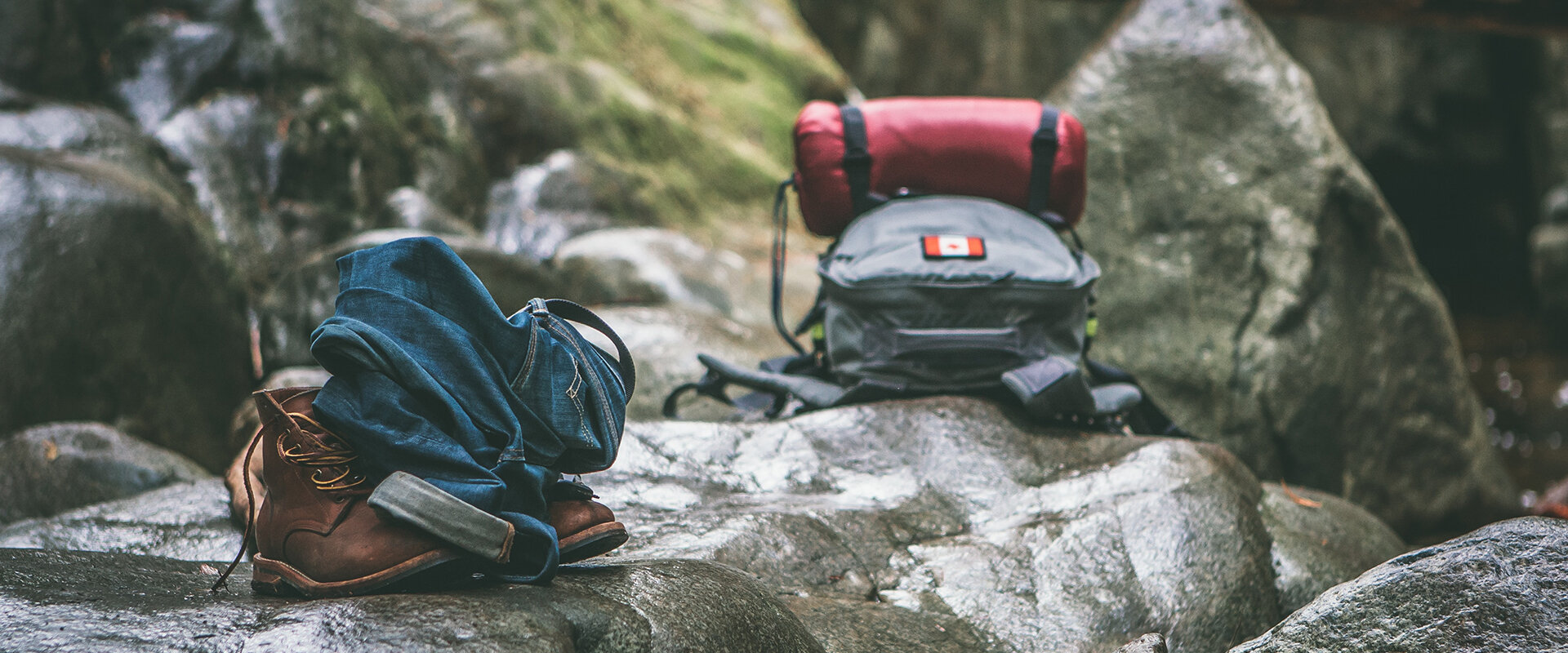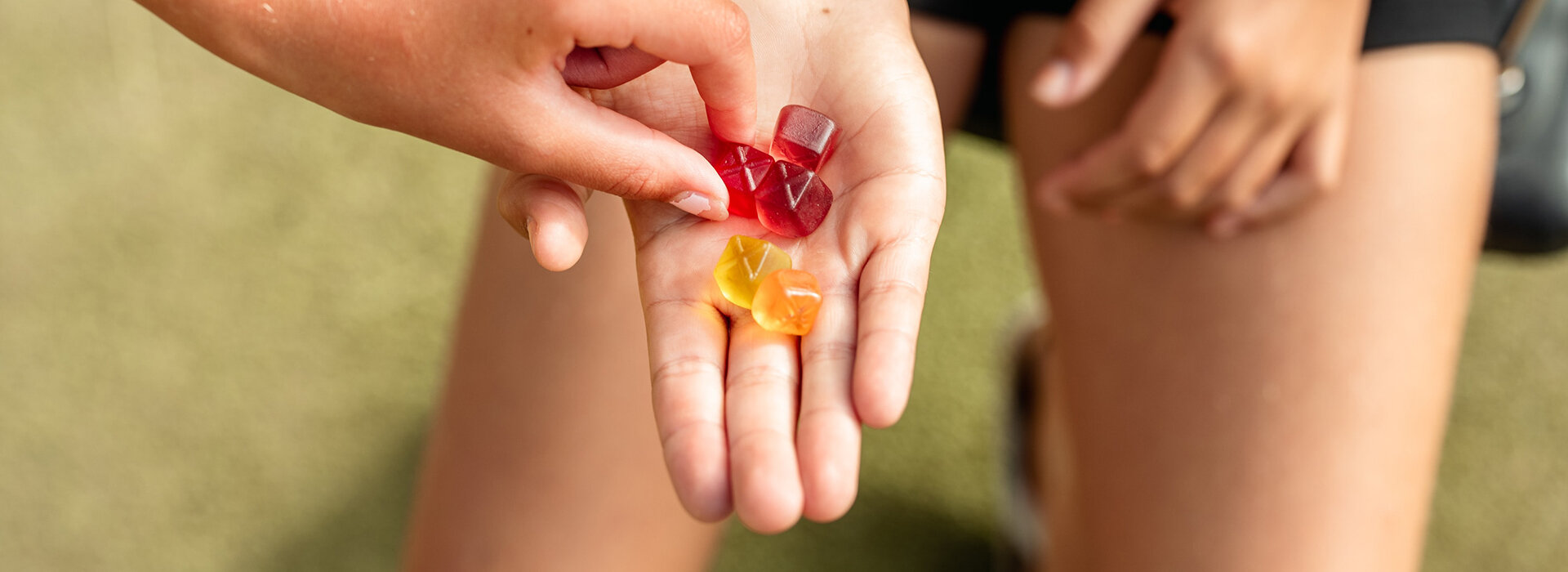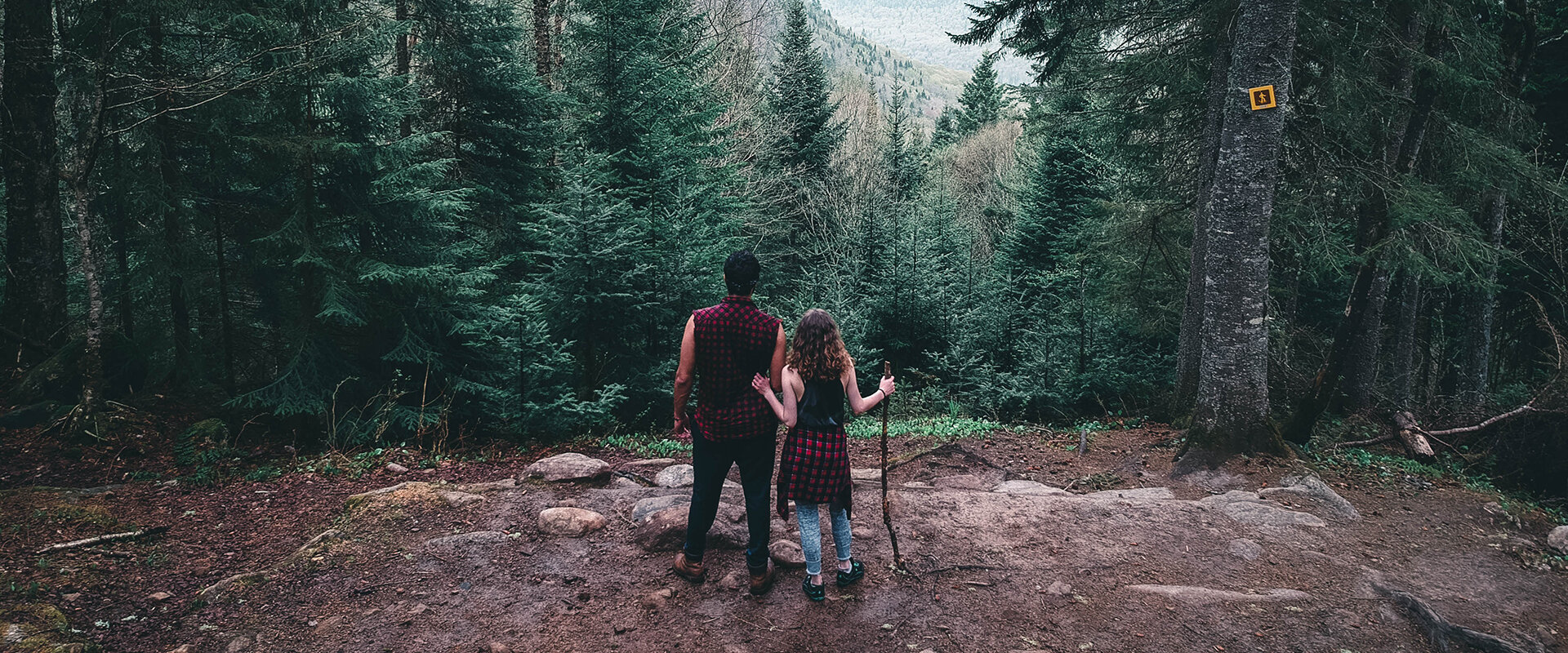10 not-so-obvious hiking tips for smooth summer trekking
As summer arrives, Canadians know one thing: hiking season is here. Our northern country has some of the best hiking in the entire world. Rushing mountain rivers, lush coastal trails, towering peaks of the Rockies, and trails winding through dense woods are just a few of the beauties you’re bound to stumble across during summer hikes.
As the last of the snow melts away (ok, some of it will stick around until August… because, Canada), get ready to get your boots dirty and your muscles toned. To not venture through wildflower meadows and mountain trails that give way to breathtaking views would frankly be a total waste of summer. Now that we’re all out of hibernation, it’s high time to create memories, challenge yourself, and experience the sheer joy of exploring nature's playground on foot.
But before you go all Cheryl Strayed, pause for a hot second because we’ve got a few trail tips that you’ll definitely want to consider. And no, we’re not giving you any generic “stay hydrated,” or “wear sunscreen,” advice. If you don’t already know that, best to stay under whatever rock you’ve found yourself under and not attempt to explore the trail. (We joke. Kind of.) Read on for 10 less common hiking tips.
1. Bring a change of lightweight shoes for afterwards
Usually when we think of trail or hiking gear, we’re thinking about the outerwear we need to bring while we’re on our hikes. You know, the dependable rain jacket and trusty boots with solid grip. But as any seasoned hiker knows, sometimes it’s the stuff you pack for after the hike that really matters. When you’ve sat in a car in damp layers or muddy boots enough times, you start to realize that gear for the trip home or post-hike beers really matters. Especially the shoes. Do your footsies a solid favour by stashing in your pack (or car) a pair of lightweight sneakers, crocs, or flip-flops.

That feeling at the end of a hike when you can finally take off your boots...
2. Pack things like sunscreen and bug spray once at the beginning of the season
There are certain things you’re going to need for basically every hike. I’m talking sunscreen, bug spray, pain killers, bear spray if you’re in bear country, basic first aid supplies, a headlamp, and a ziploc bag for your phone or other tech. Rather than packing and unpacking these things each time, do it once at the beginning of the season and leave it ready. Tip: mini travel bottles are your friend for things like sunscreen and bug spray so that you’re not bringing unnecessarily large bottles. By stashing mini bottles in your bag, you’re also avoiding misplacing the bigger bottle you use all summer.
3. Know your fitness and ability level
A lot of hikers will tell you to know the route, the estimated time it’ll take to complete it, and the difficulty level. And that’s all true… but it’s missing a crucial part of the picture: your ability level. Know your fitness and hiking ability level before you start planning—or agree to—a trek. Tune your ego out here and be honest with yourself. Are you a seasoned hiker who stays fit year-round and knows this area and terrain? Are you a little out of shape but generally able to hold your own on tough mountain inclines? Or are you someone who is getting back outside but needs a few gentle test runs to kick off the season? Wherever you’re at, it’s all good! Knowing your body, strengths and weaknesses is just a lot more useful than knowing that you’re embarking on a route that other people found strenuous or completed in five hours. That information is all relative.
4. Forget PB&J: falafel and candy are the best trail food
A little secret: peanut butter and jelly sandwiches, granola and trail mix are not prerequisite foods to have in your pack before you start your trail. Truthfully, the classic PB&J sammie isn’t even that good! I said what I said. If you’re stuck for what fuel to bring, consider falafel, empanadas, candy, or a thermos of a blended soup. These kinds of foods are perfect for the trail because they’re either high in protein, high calorie (because you’re burning a lot), self-contained, or hydrating. Plus, they’re not boring. As we all know, food just tastes better outside and a lot of the allure of hiking is to eat meals in cool places (or is that just me?). So at least pack something fun!

Did someone say candy?
5. Bring more calories, layers and water than you think you’ll need
Ok, you probably have heard this piece of advice, but seriously, pack extra sh*t! (Within reason of course.) People, I’m talking extra water, food and layers. Plus, you might as well bring a good sense of humour because, hey, adventures on the trail can take a turn. Mud slows your pace, unexpected mountain weather can throw a wrench in your plans, and a navigational error could turn into a fun game of hide-and-seek with Mother Nature. So plan for the unexpected. Prepare to be out for longer than you intended and have backup supplies in case you do get lost. Remember, the more prepared you are, the more laughs you'll have when recounting those "remember that time when…" stories later.
6. Repurposed old yoga mats make for great outdoor seats
It’s not like you need all the comforts while you’re outside exploring old-growth forests or rocky peaks for the day. But after a certain number of adventures, you may start to get sick of sitting on a cold or wet spot while you have your lunch. Or, you may have parked your bum on an ant hill or uncomfortably rocky ledge one too many times (yes, I’m speaking from experience). So here’s the—obviously lightweight—solution: cut a small rectangle out of an old yoga mat, roll it up, and stuff it into your daypack. It’s light, won’t take up much space and can be super convenient for sitting on, or for stepping onto as you change shoes after. We all know that awkward hopping balancing act we do in the parking lot instead…
7. Know who you’re hiking with
Knowing exactly who your hiking buddy is is arguably more important than truly knowing your significant other. (Ok, maybe not, but still.) Is your trekking partner the type to exaggerate or downplay the level of this hike? Are they likely to overlook key details, arrive late, neglect to tell you about the cliff you must climb to get to the summit, or wildly underestimate how long it’ll take? Do they tend to forget their entire lunch? What kind of pace will they keep and does that work for you? These are the questions you must ask. Not all hiking partners are suitable for one another.

Hiking buds are the best buds
8. Always bring a buff or bandana
My friend, a buff or bandana is one of the best things you can have on your during a hike because it can double up to serve many purposes. Hiking through blazing-hot B.C. in the dead of August? Dip it into cold mountain streams to keep your neck or head cool. Made it to the top of a sun-exposed mountain? Use it to keep your neck or forehead from burning? You can also use it to temporarily wrap a cut, keep hair off your face, or wipe muddy hands.
9. Keep the night before totally clear
And alcohol-free. I know, I know… this isn’t exactly a fun piece of advice. Not to nag though, but as tempting as it may be to join in on the hostel pub crawl or participate in that game of flip cup in the common lounge, maybe don’t? Sure, certain activities in social spaces like hostels can seem exciting at the time but nobody wants to start a trek at 6:30 a.m. with a hangover. Maybe opt for a quiet night in, make use of the hostel library, or sip tea by the bonfire instead.
10. Treat the places where you wander with respect
Jokes aside, treat the trail and nature with respect. Sure, this word of advice is a fairly common one but that’s because it’s important. Leave the trail as you found it (that includes not tossing fruit peels and apple cores), respect fire bans, know where you can and can’t legally camp, and be careful where you tread and that you’re not destroying the plants that live there. Canada is a beautiful country and since so much of Canadian culture revolves around experiencing the lakes, oceans, mountains and forests, we have to do so in a way that’s respectful. That’s especially true during a time when forest fires and floods are particularly damaging. Be respectful and conscientious of our delicate environment. Leave as you found it, appreciate it and, lastly, enjoy yourself.


